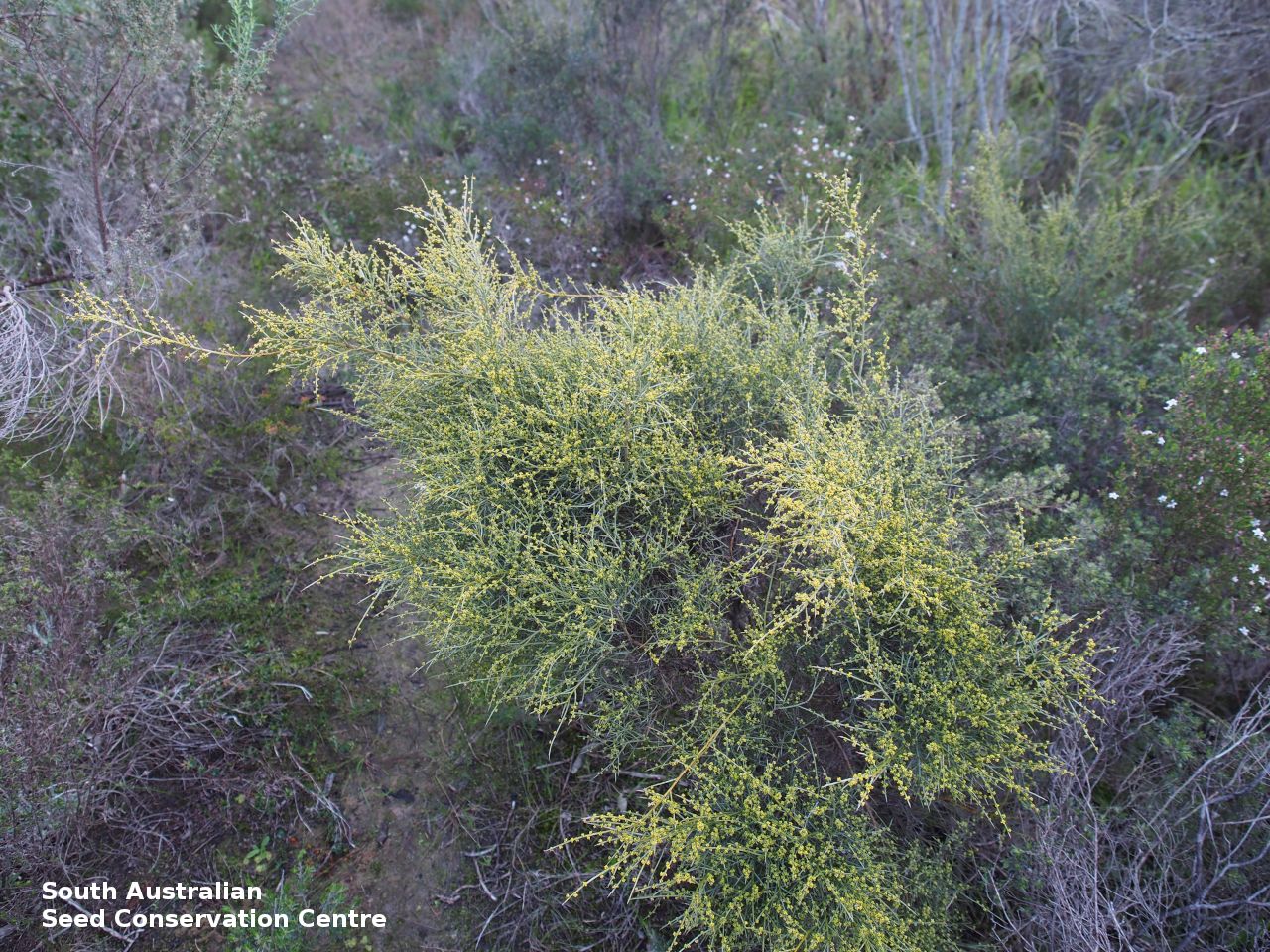
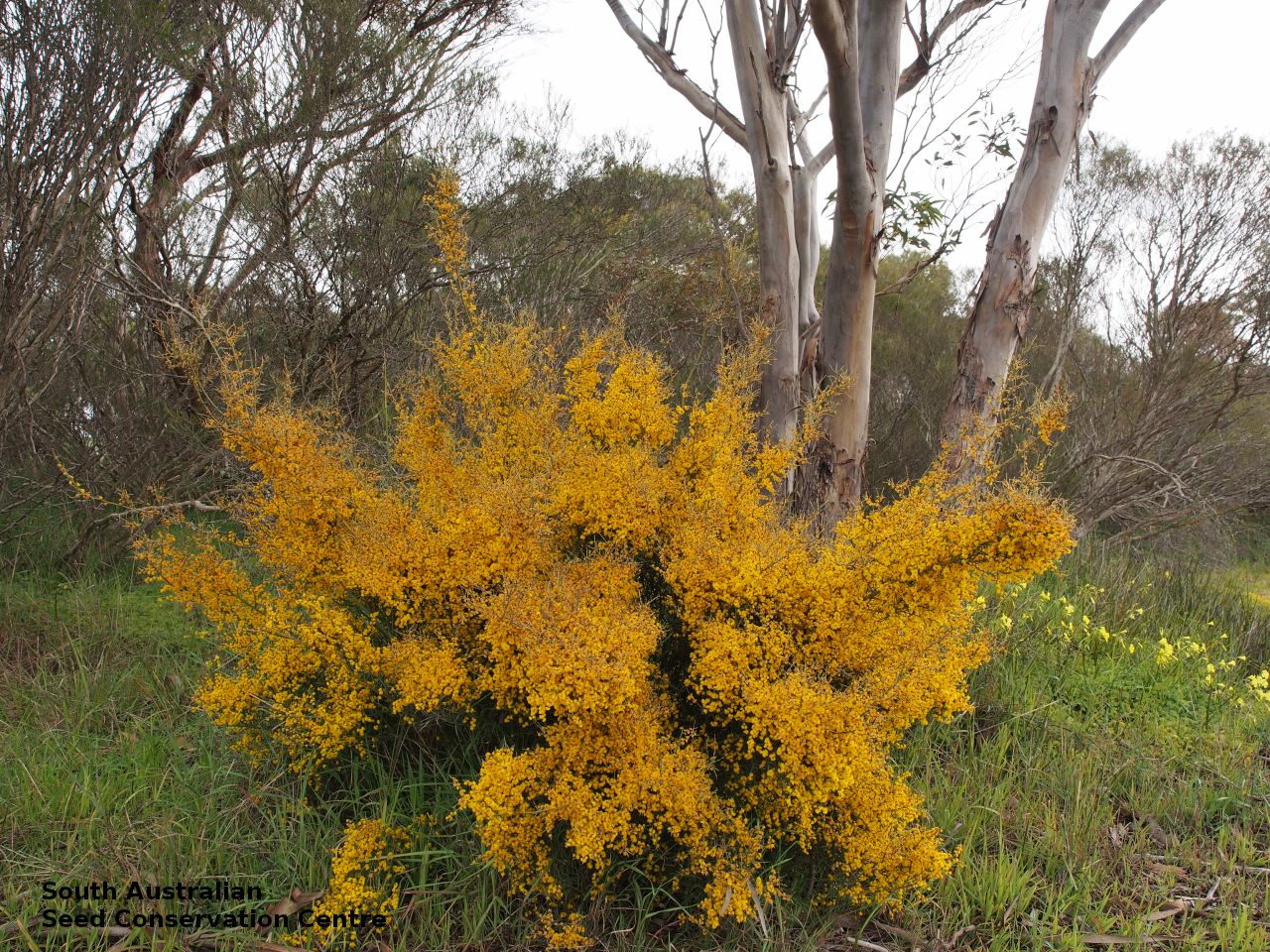
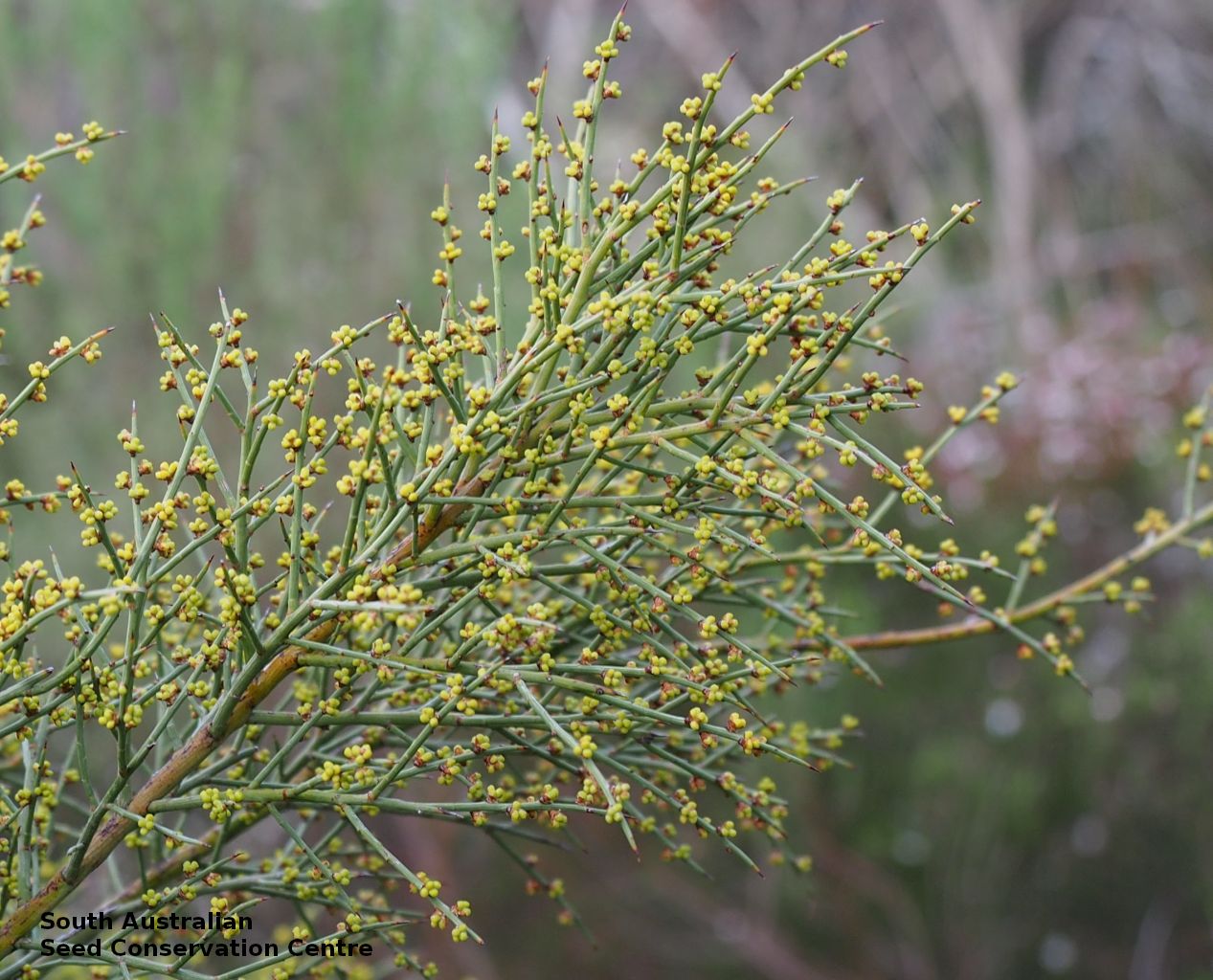
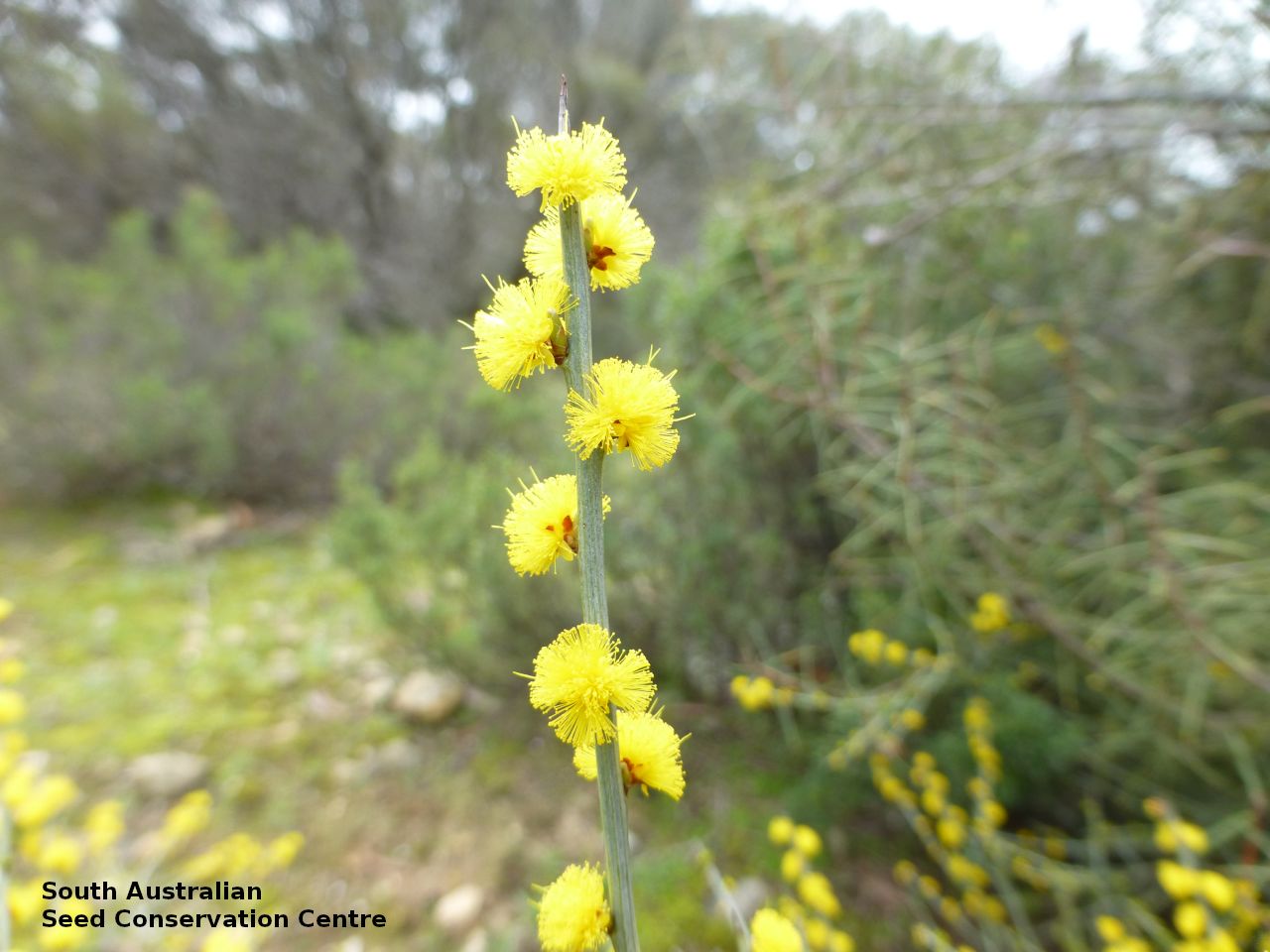
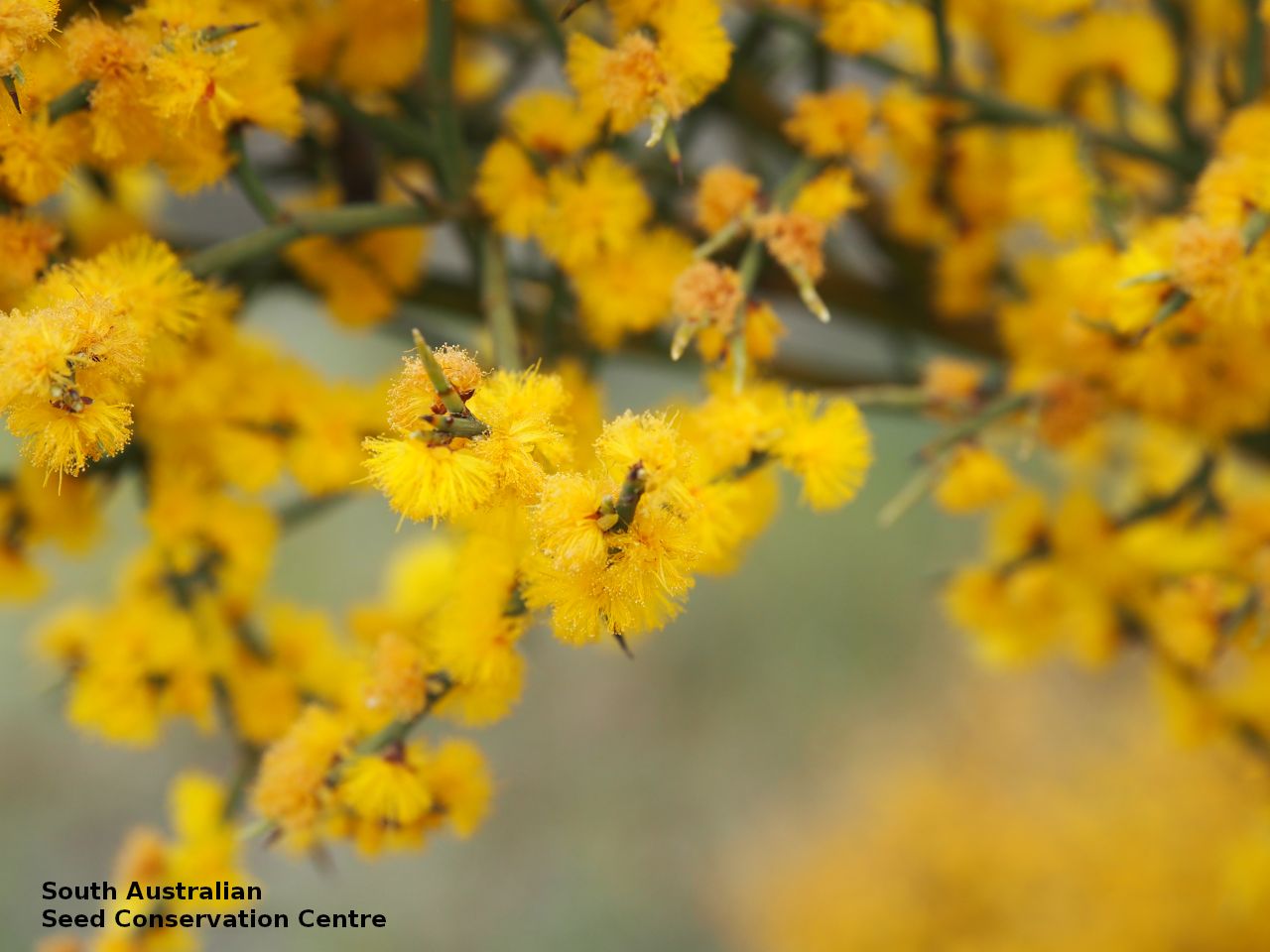
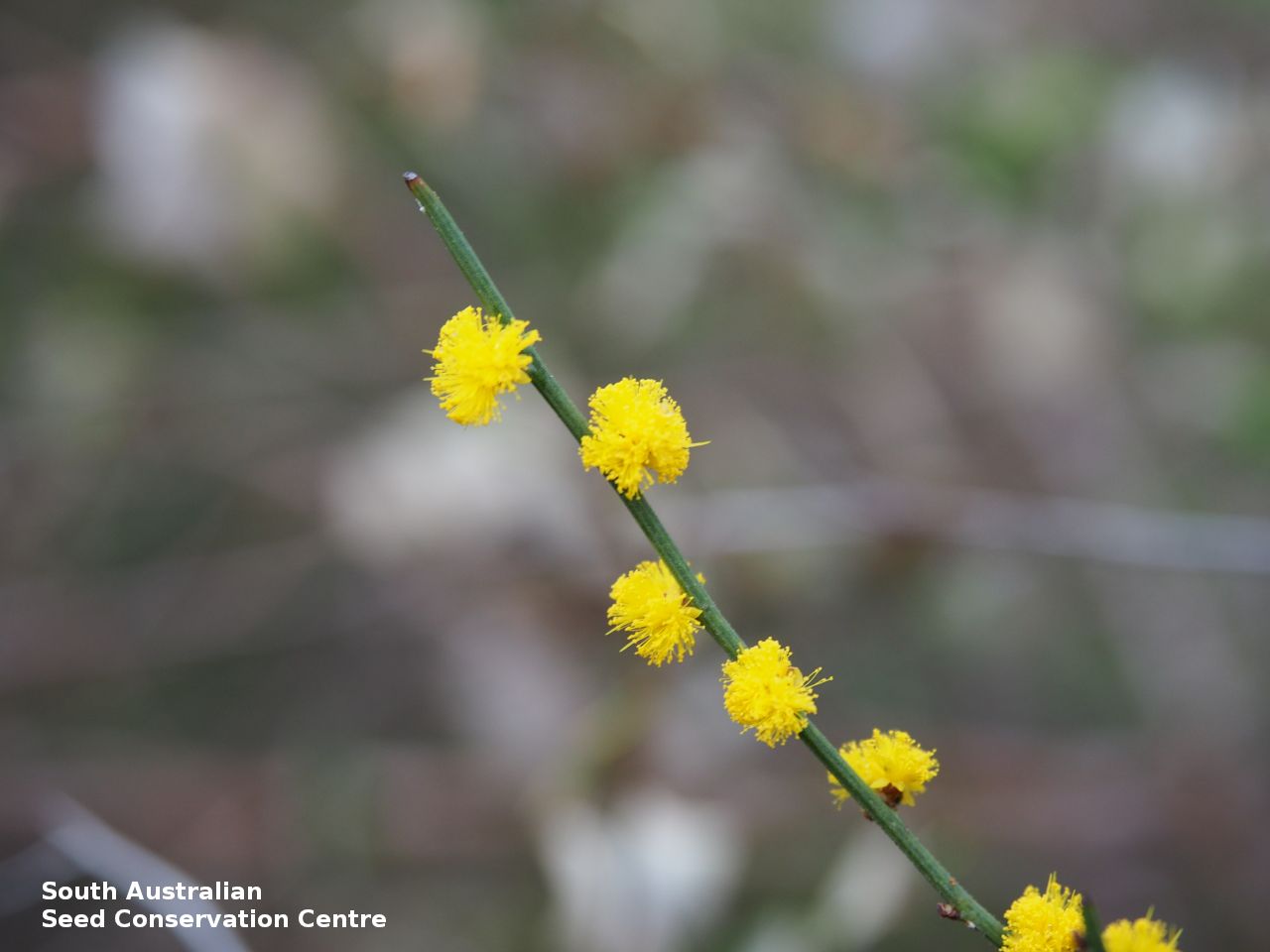
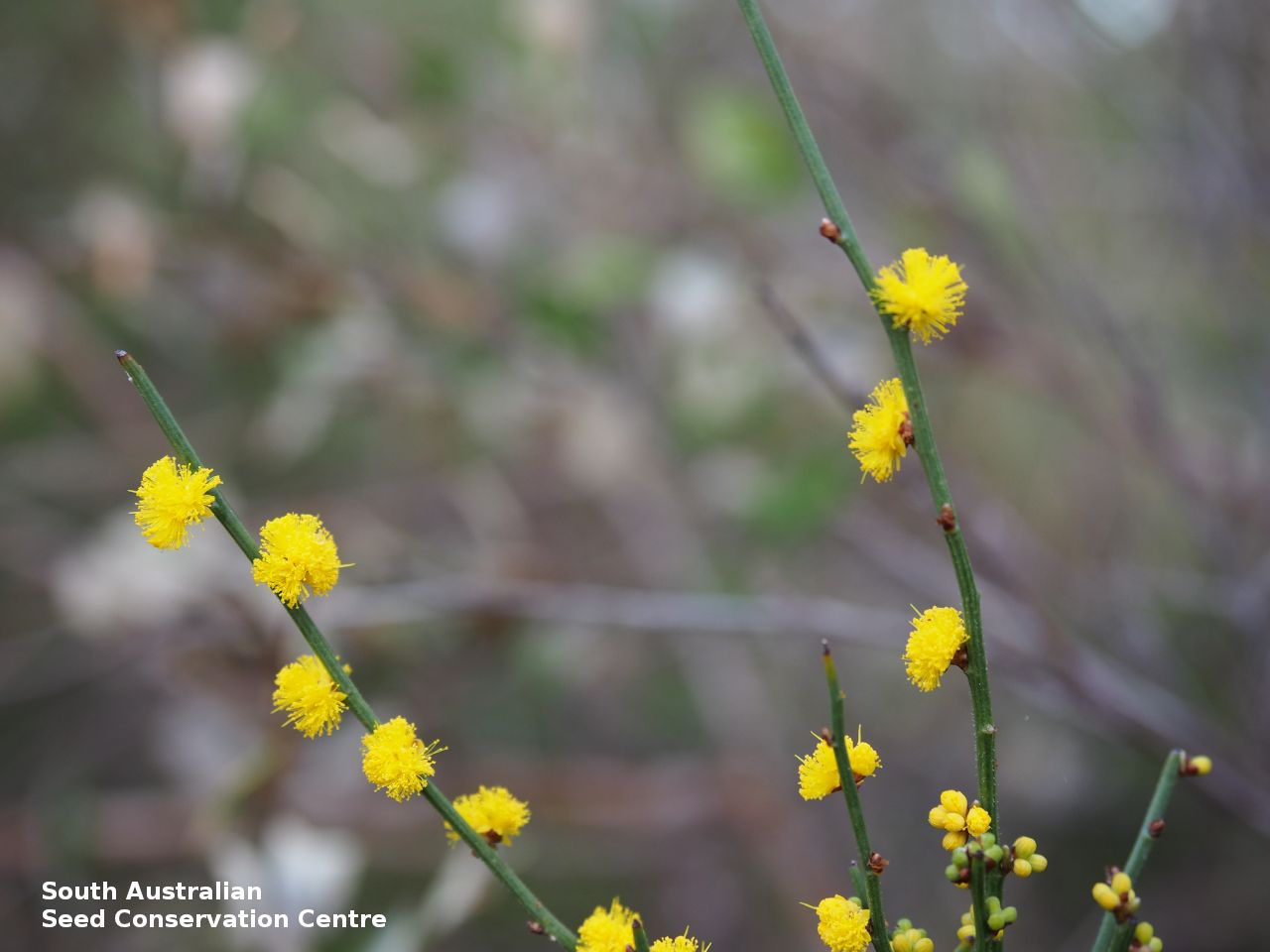
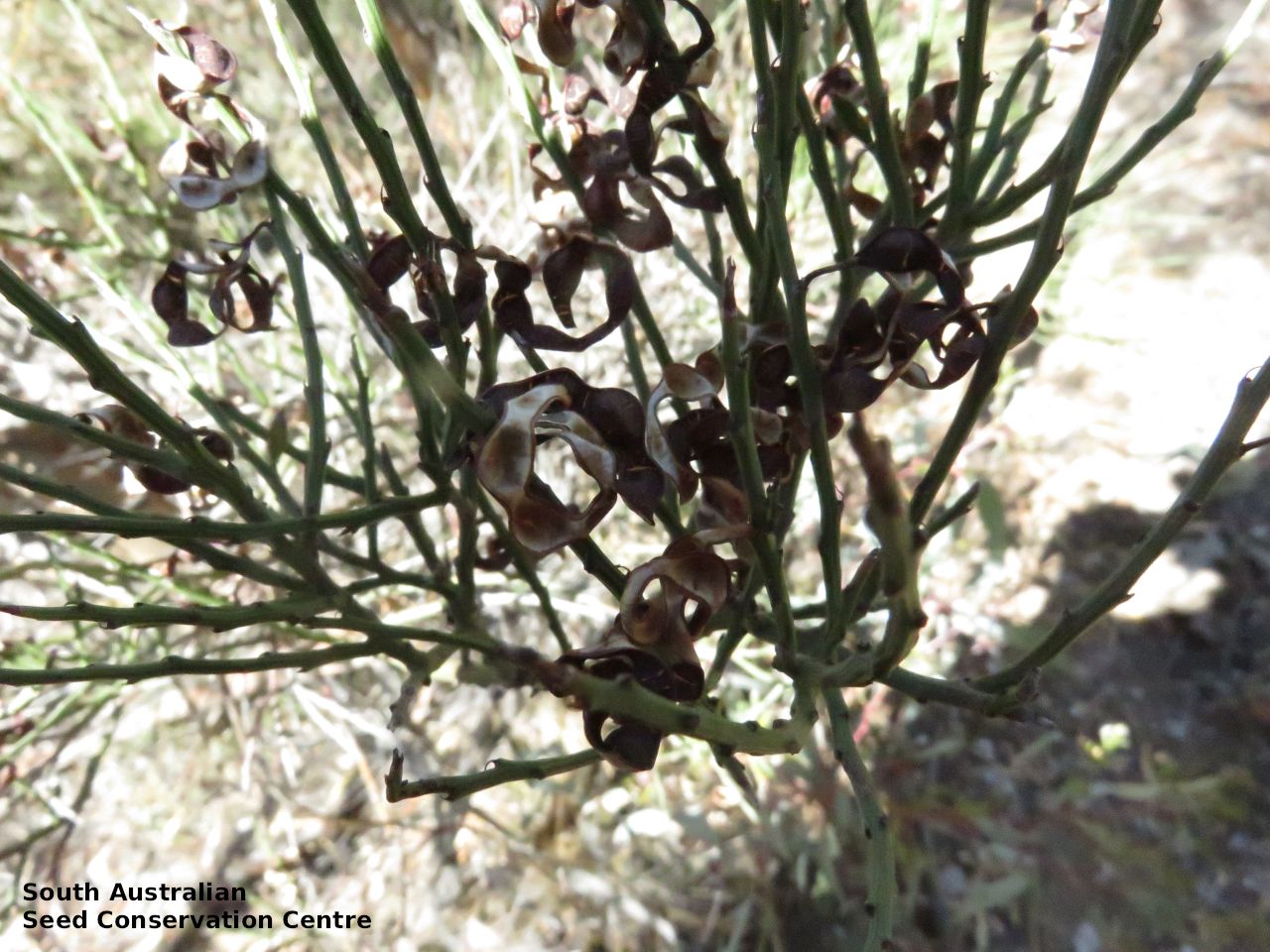
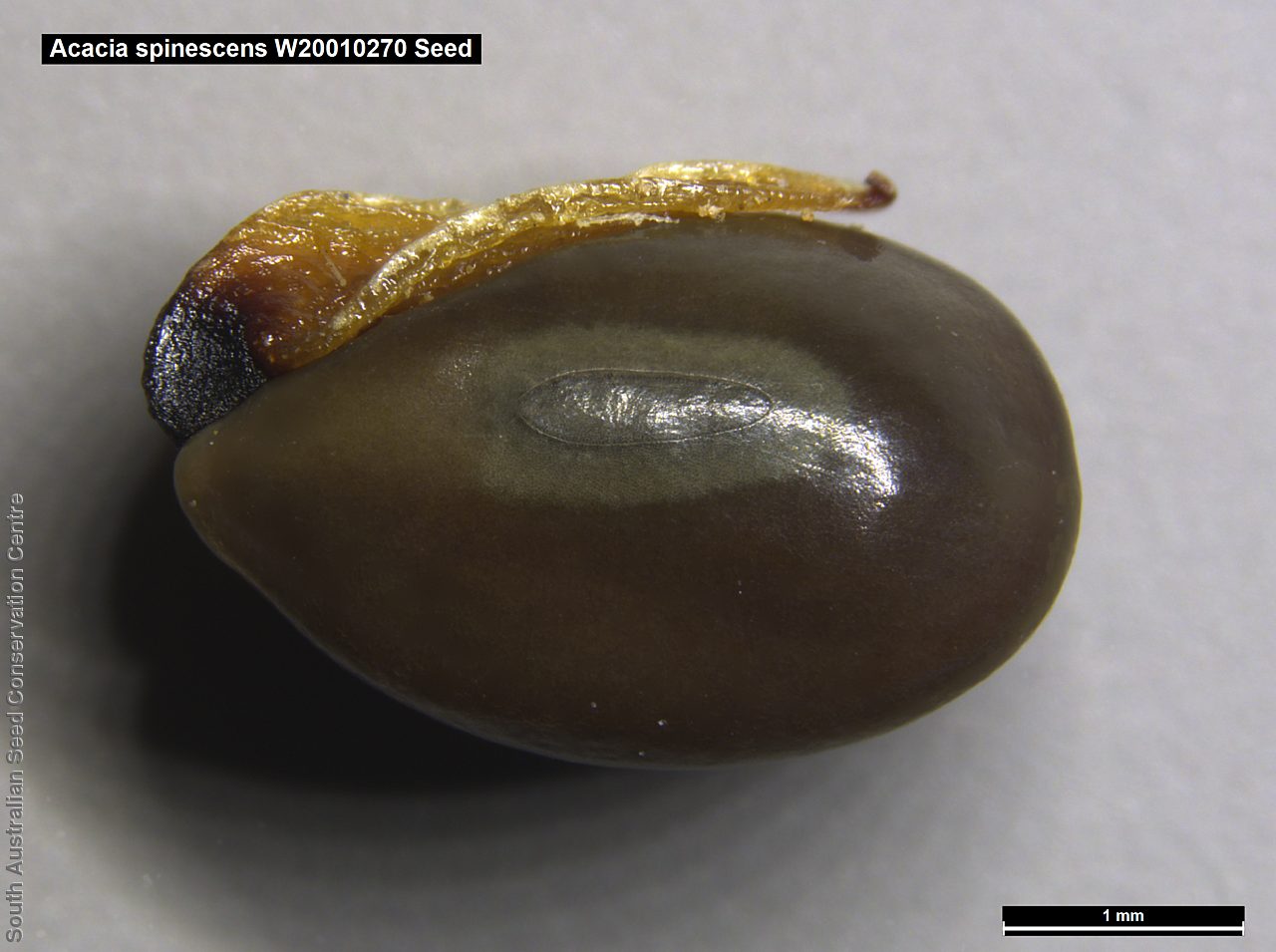
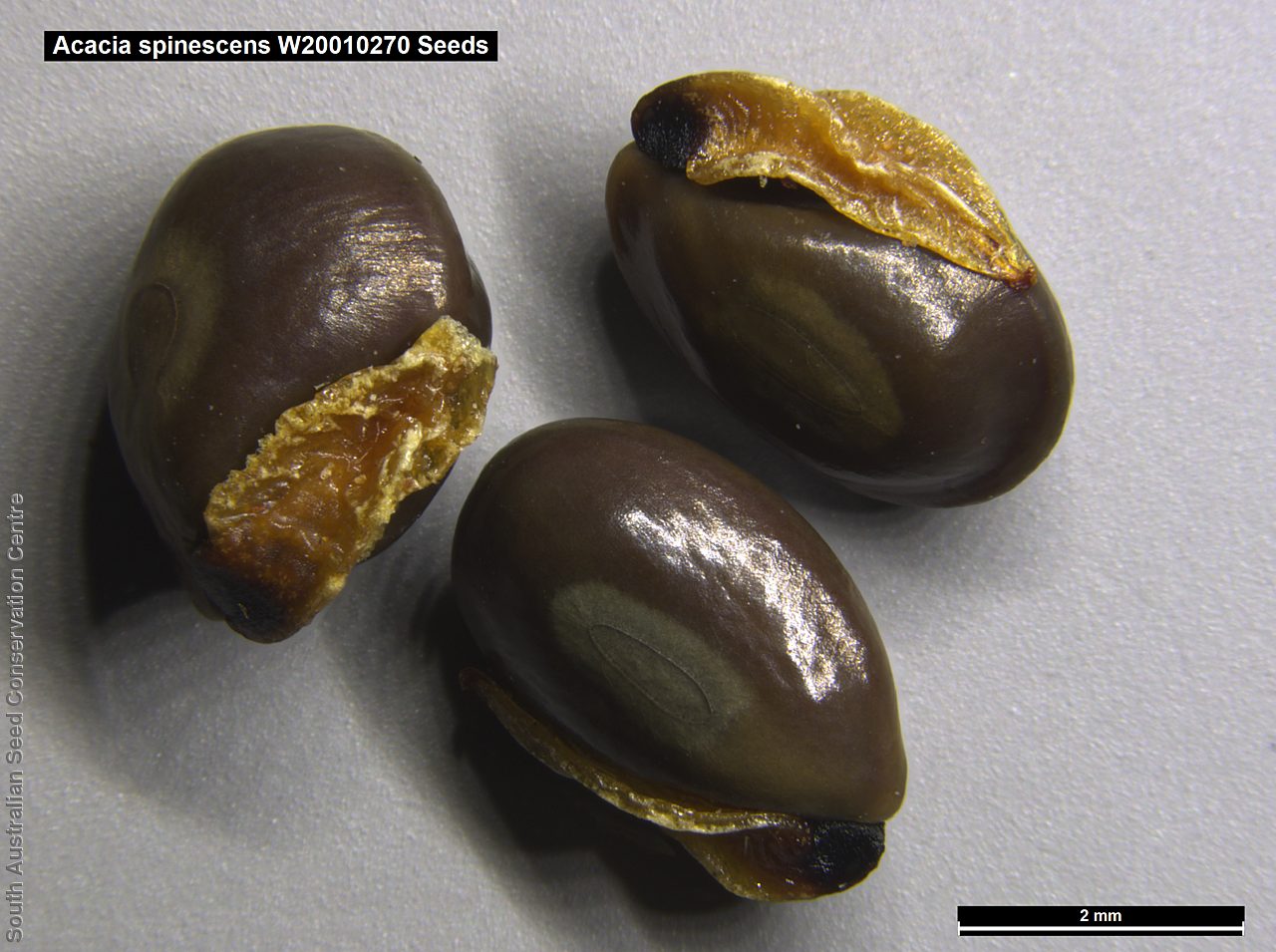
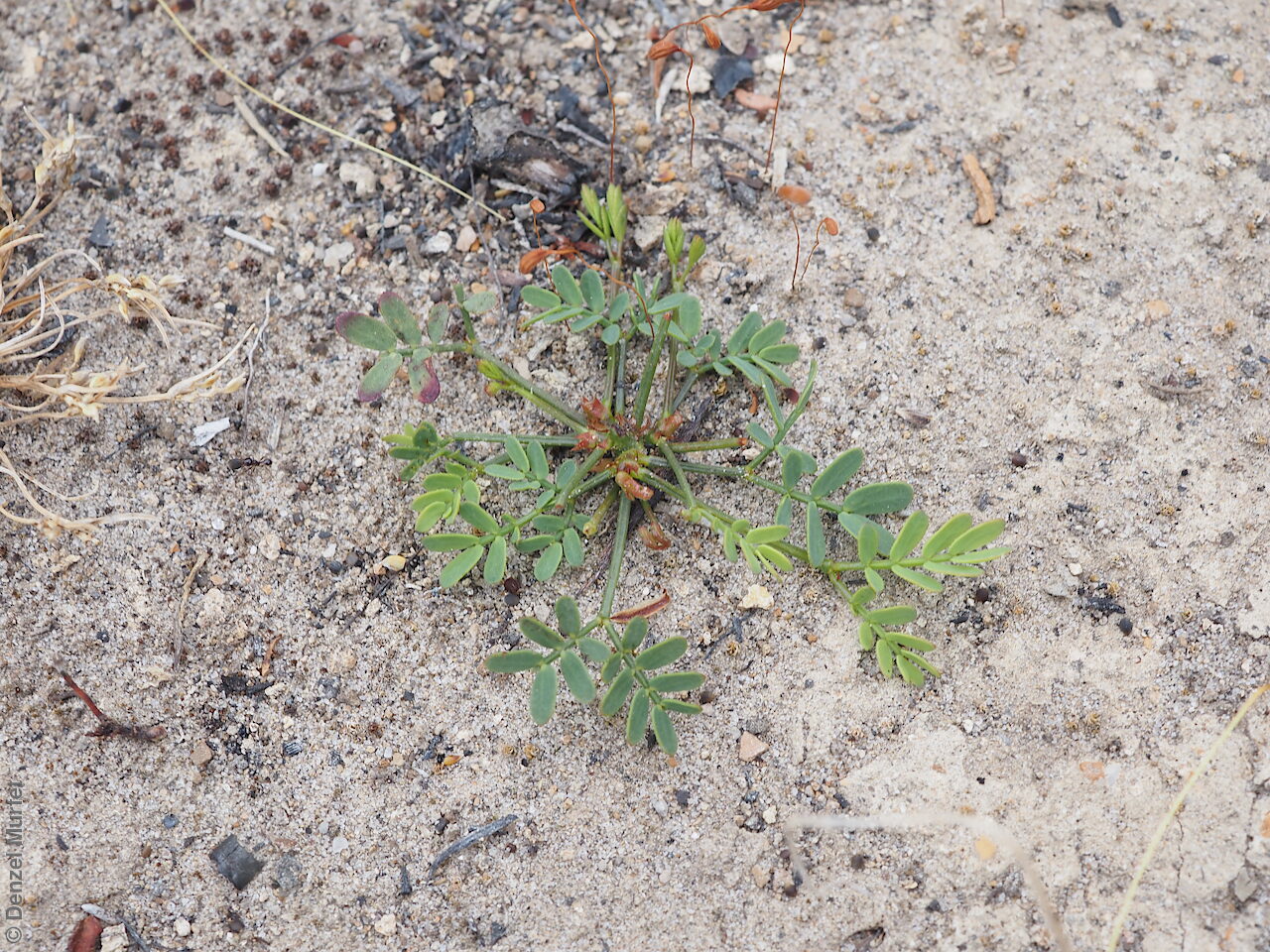
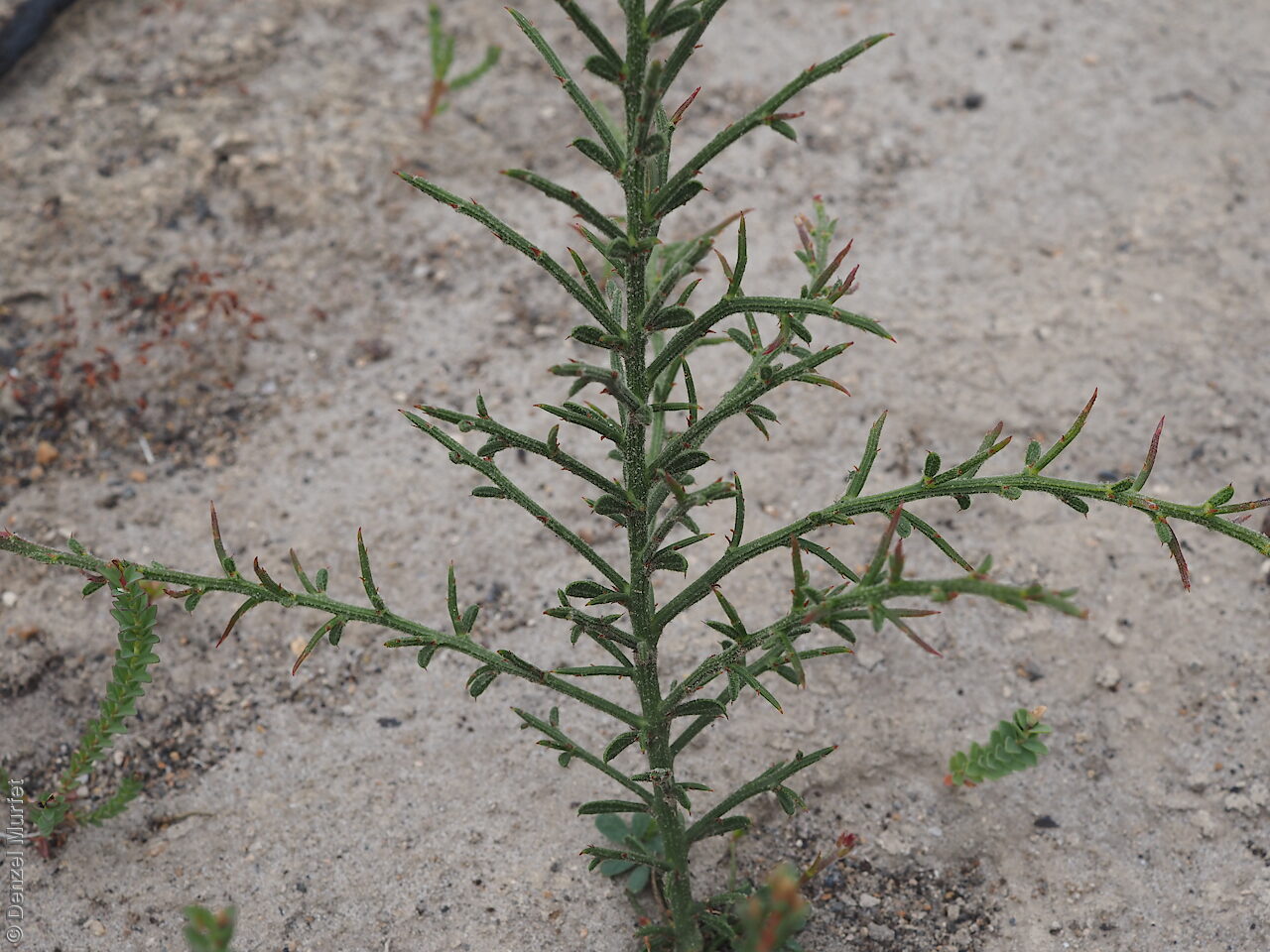
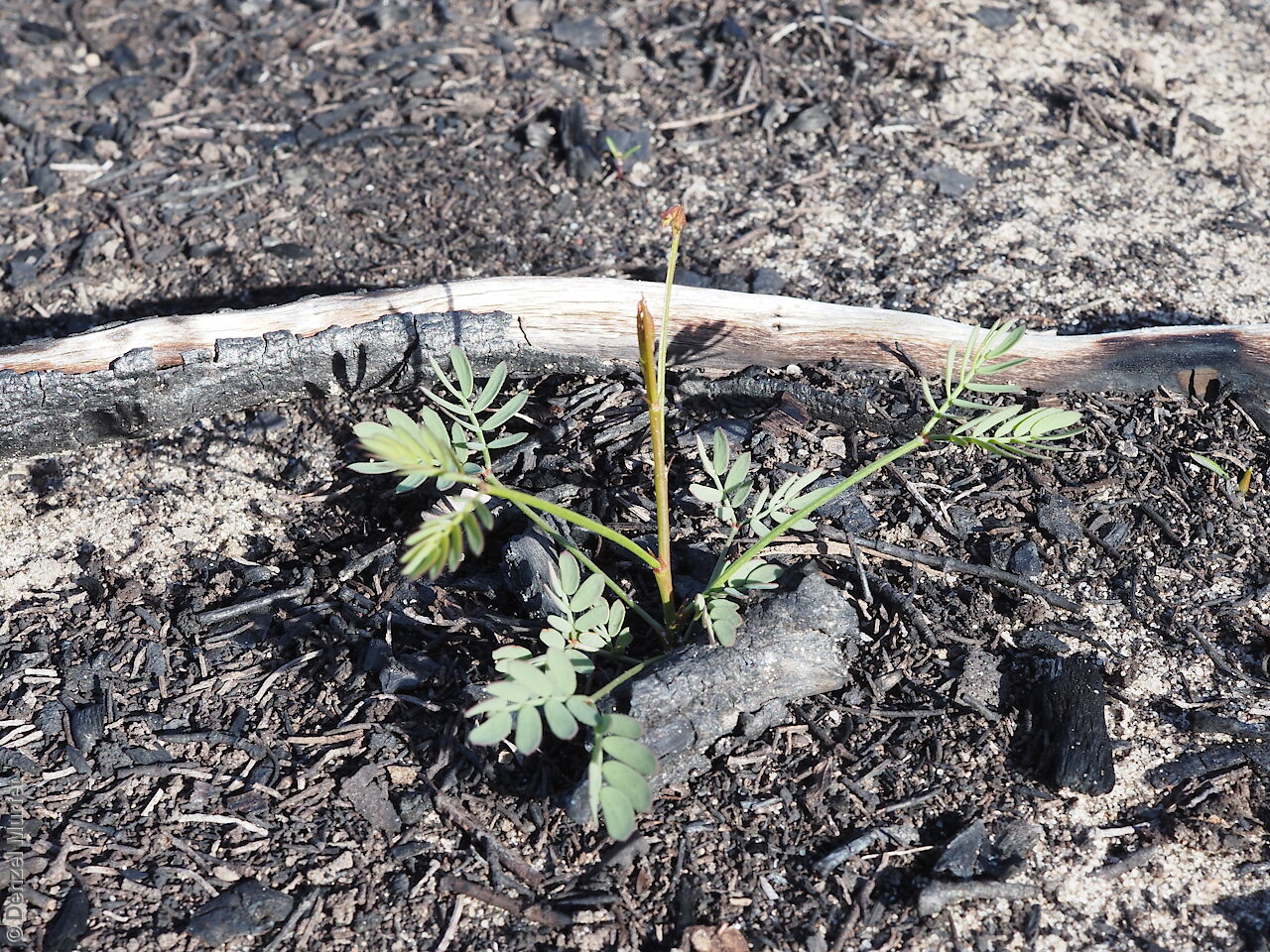
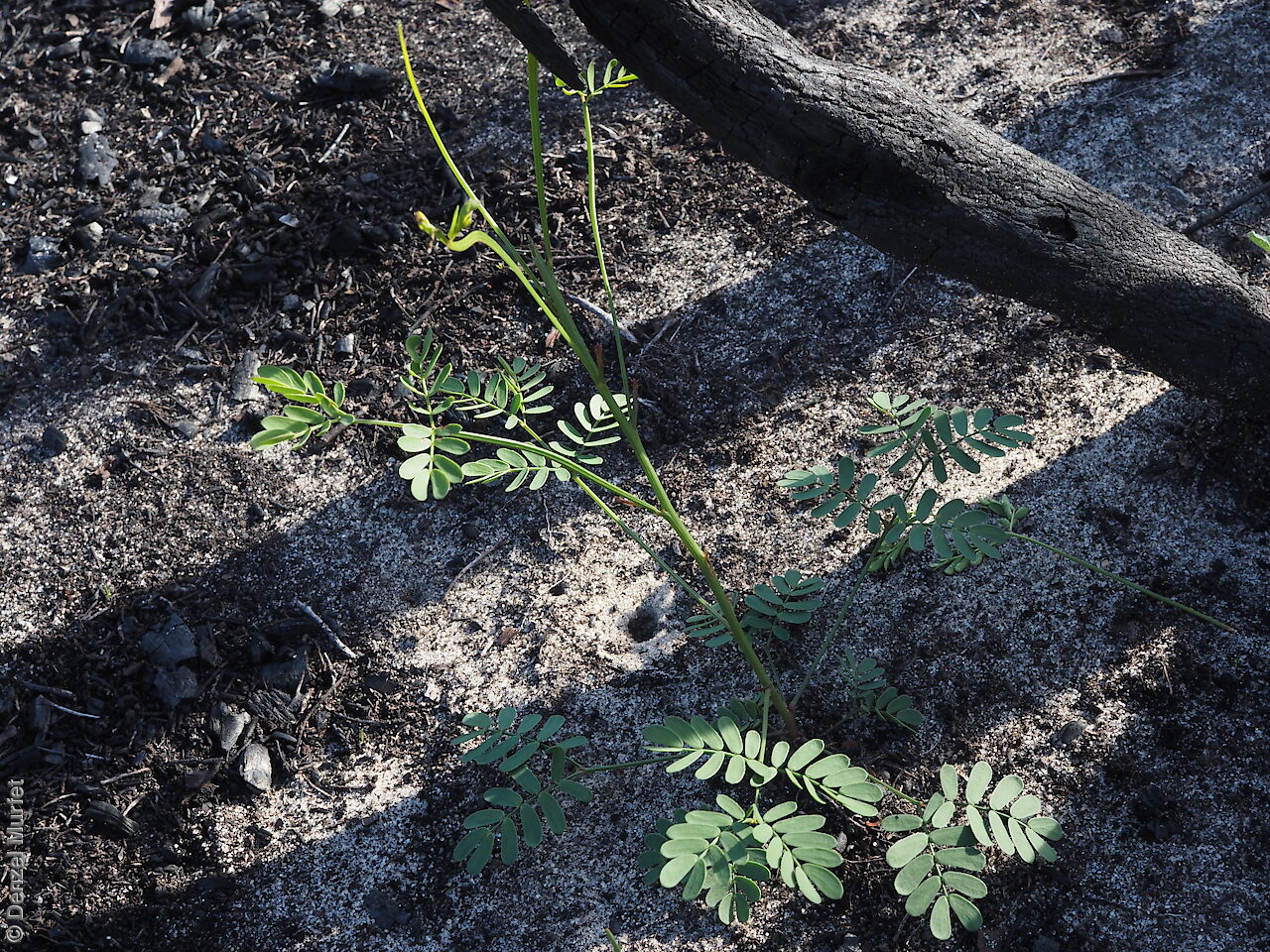

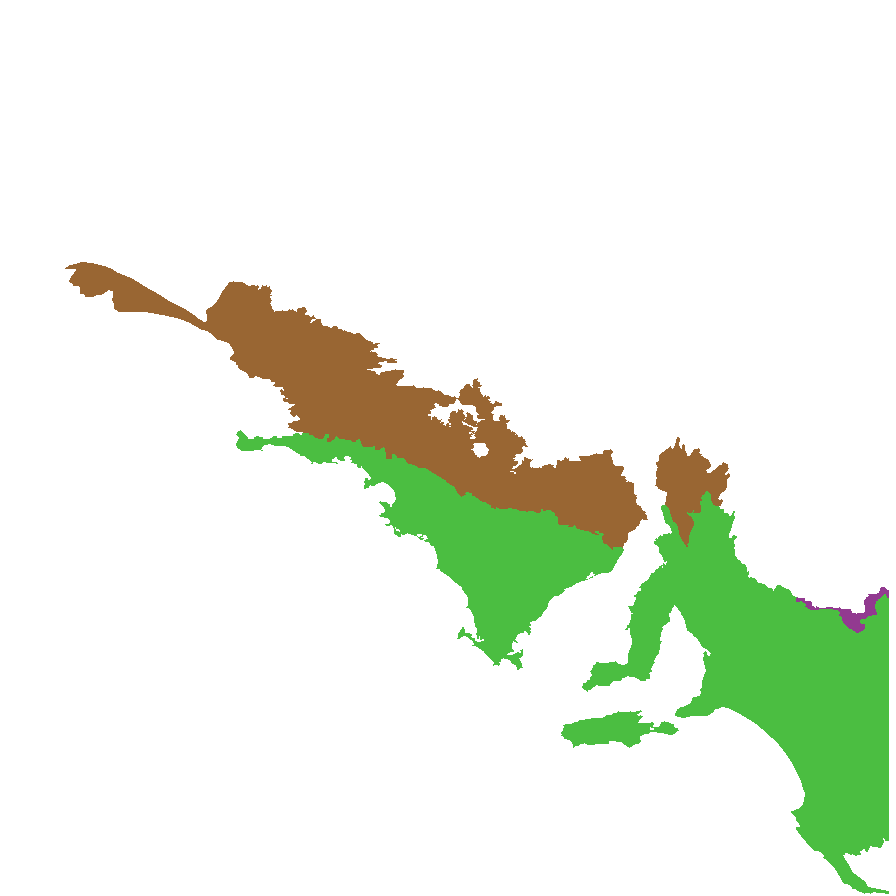
Botanical art
Prior names
Choretrum oxycladum
Etymology
Acacia from the Greek 'akakia' and derived from 'ake' or 'akis' meaning a sharp point or thorn and 'akazo' meaning to sharpen. Dioscorides, the Greek physician and botanist used the word in the 1st century AD for the Egyptian thorn tree, Acacia arabica. Spinescens from the Latin 'spina' meaning thorn, spine and '-escens' meaning beginning, referring to the branches ending in a spine or sharp point.
Distribution and status
Found in the southern part of South Australia growing in a variety of soil types and vegetation associations. Also found in Victoria. Native. Common in South Australia. Common in Victoria.
Herbarium regions: Flinders Ranges, Eyre Peninsula, Northern Lofty, Murray, Yorke Peninsula, Southern Lofty, Kangaroo Island, South Eastern, Green Adelaide
NRM regions: Adelaide and Mount Lofty Ranges, Kangaroo Island, Northern and Yorke, South Australian Arid Lands, South Australian Murray-Darling Basin, South East
AVH map: SA distribution map (external link)
Plant description
Much-branched, erect shrub to 1 m high with branchlets rigid, terete, spiny, green with prominent yellow rib striations. Leaves usually absent, very rarely a few persistent at base of main stems. Linear to oblong, to 50 mm long and 3 mm wide, thick with tip curved or hooked, midvein prominent. Flower-spike solitary with stalkless bright yellow, globular flower-heads. Flowering between July and October. Fruits are dark brown, linear, glabrous pod to 30 mm long and 3.5 mm wide, curved and becoming twisted. Seeds are hard, dark brown, ovoid to 3.5 mm long and 2.5 mm wide. Seed embryo type is investing.
Seed collection and propagation
Collect seeds between October and December. Collect mature pods that are turning brown, with hard, dark seeds inside. Place the pods in a tray and leave to dry for 1-2 weeks or until the pods begin to split. Then rub the dried pods to dislodge the seeds. Use a sieve to separate any unwanted material. Store the seeds with a desiccant such as dried silica beads or dry rice, in an air tight container in a cool and dry place. Seed viability is usually high. This species has physical dormancy that needs to be overcome for the seed to germinate (e.g. nicking or softening the seed coat).
| Location | No. of seeds (weight grams) | Number of plants | Date collected | Collection number Collection location | Date stored | % Viability | Storage temperature |
|---|---|---|---|---|---|---|---|
| BGA | 290 (1.706 g) | 10 | 5-Jan-2006 | Cox Scrub Southern Lofty | 9-Aug-2006 | N/C | -18°C |
| MSB | 4,900 (30.19 g) | 50+ | 29-Nov-2006 | TST109 Yorke Peninsula |
Number of plants: This is the number of plants from which the seeds were collected.
Collection location: The Herbarium of South Australia's region name.
% Viability: Percentage of filled healthy seeds determined by a cut test or x-ray.